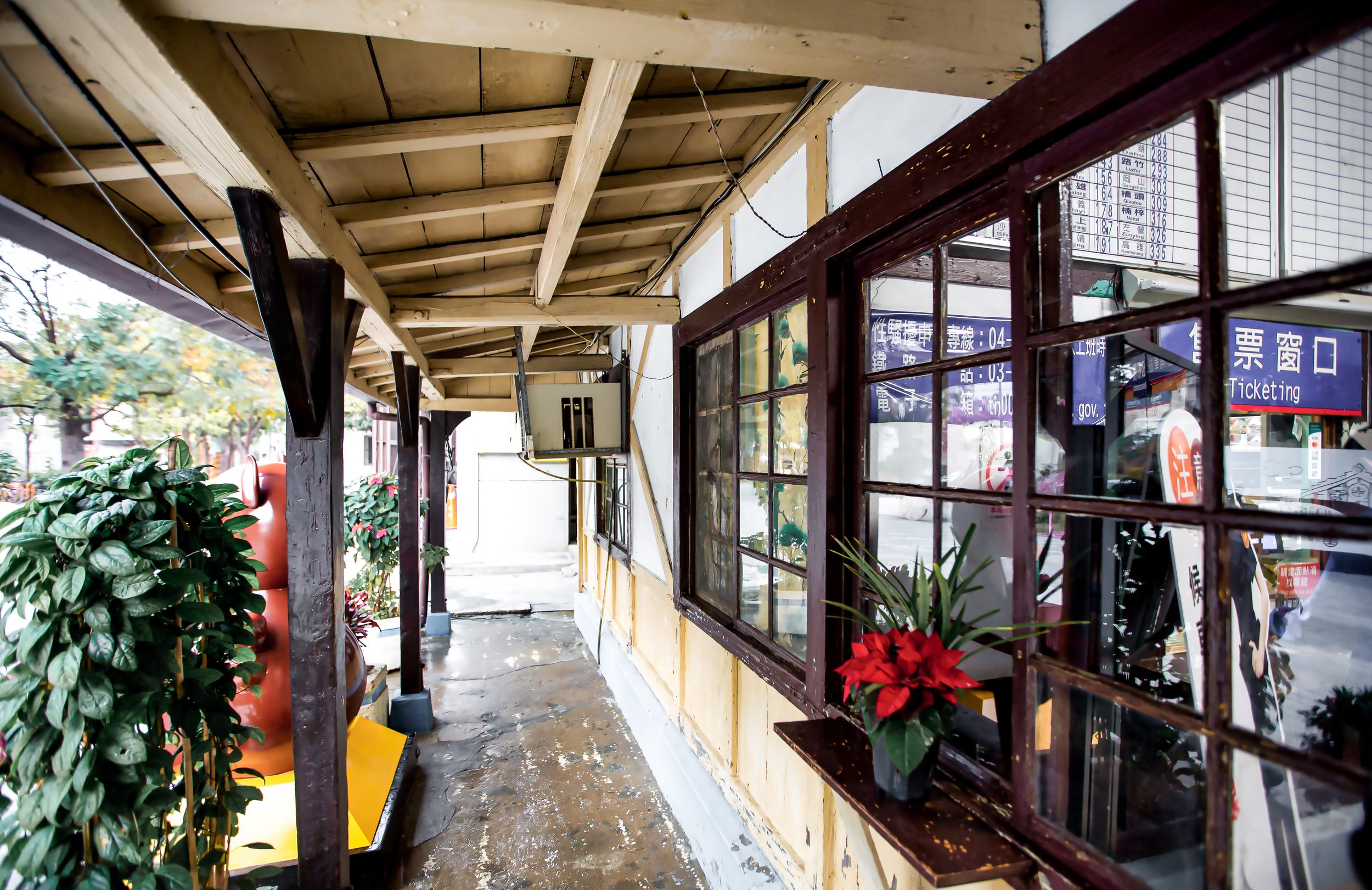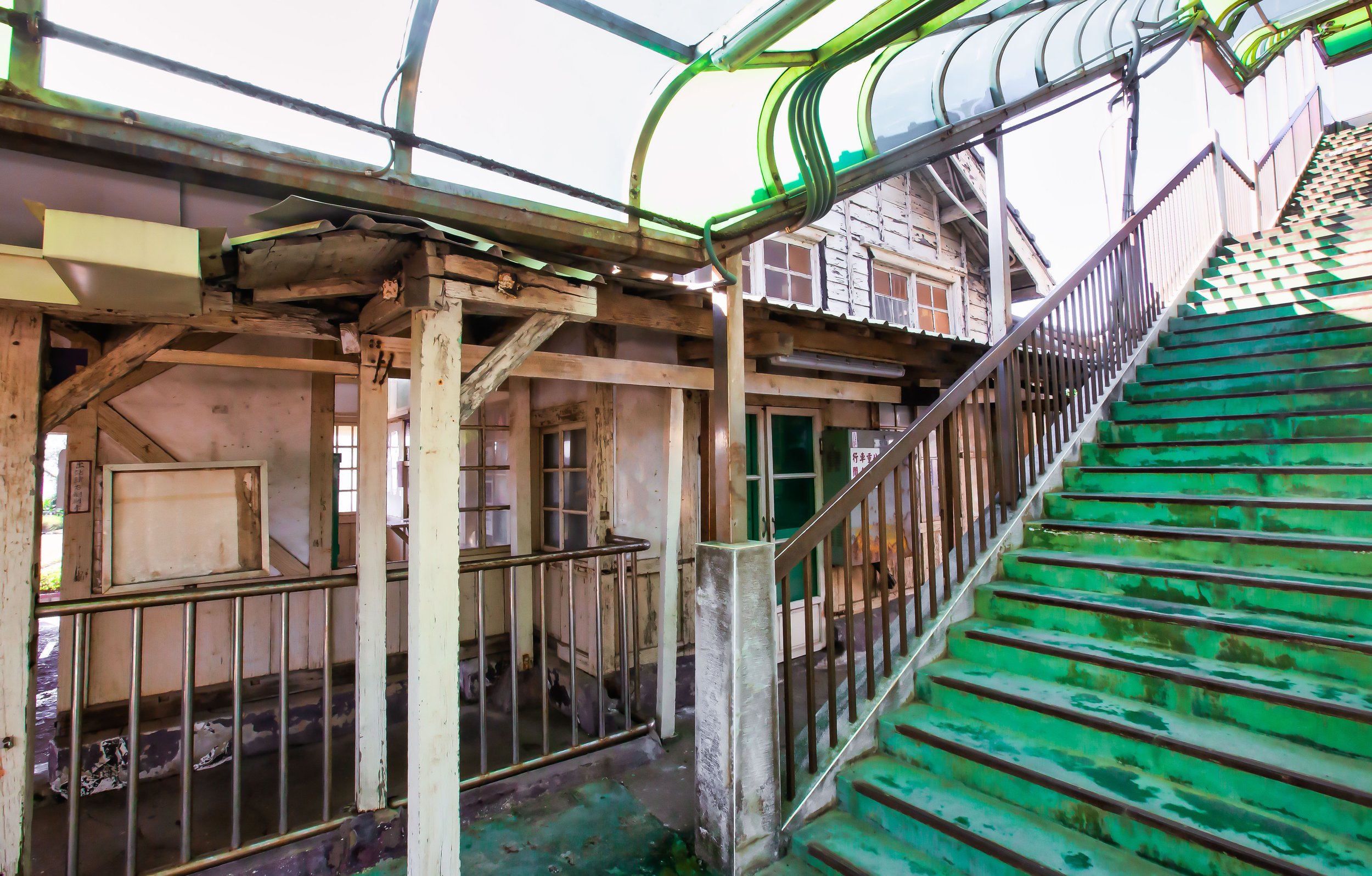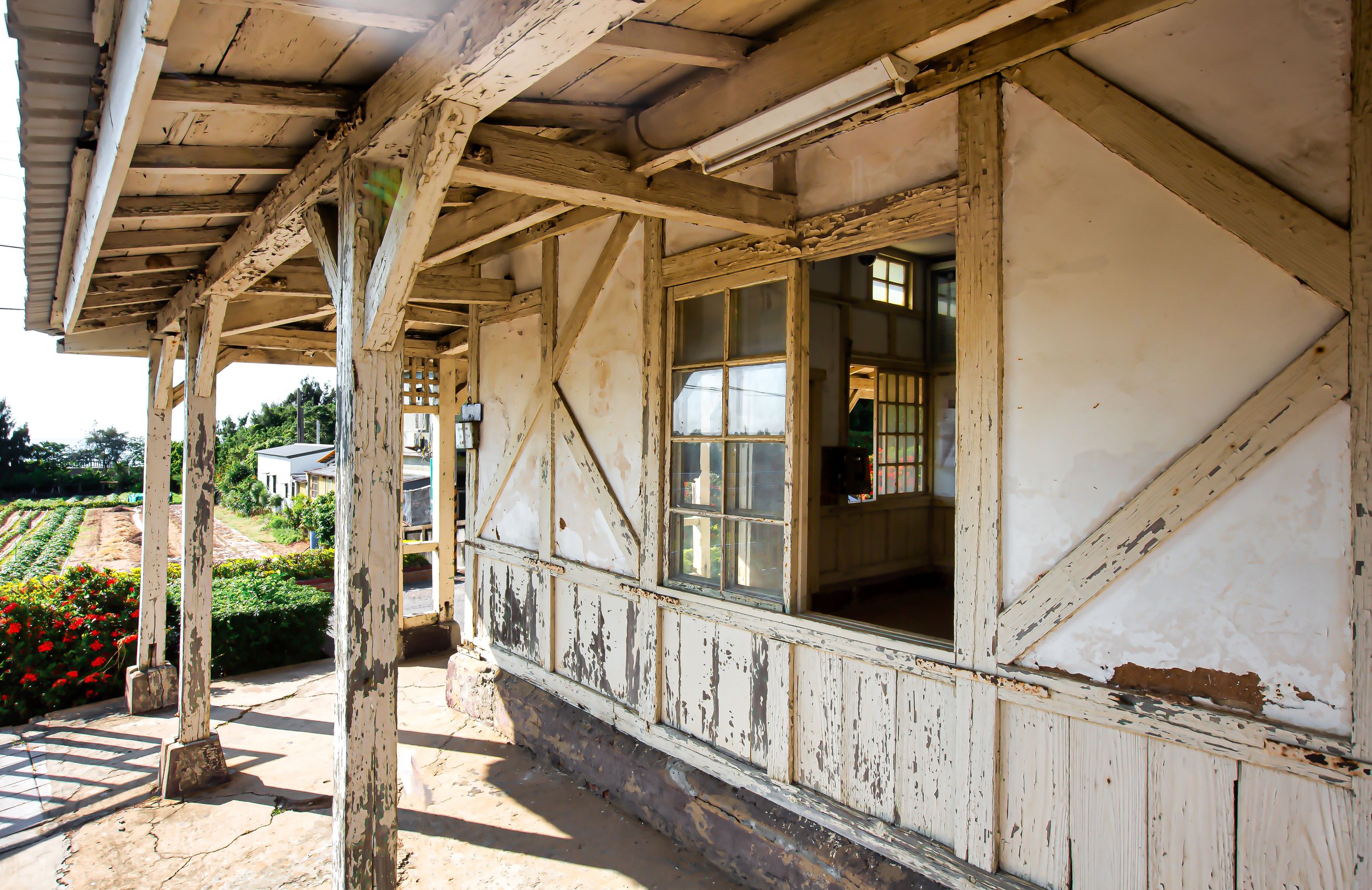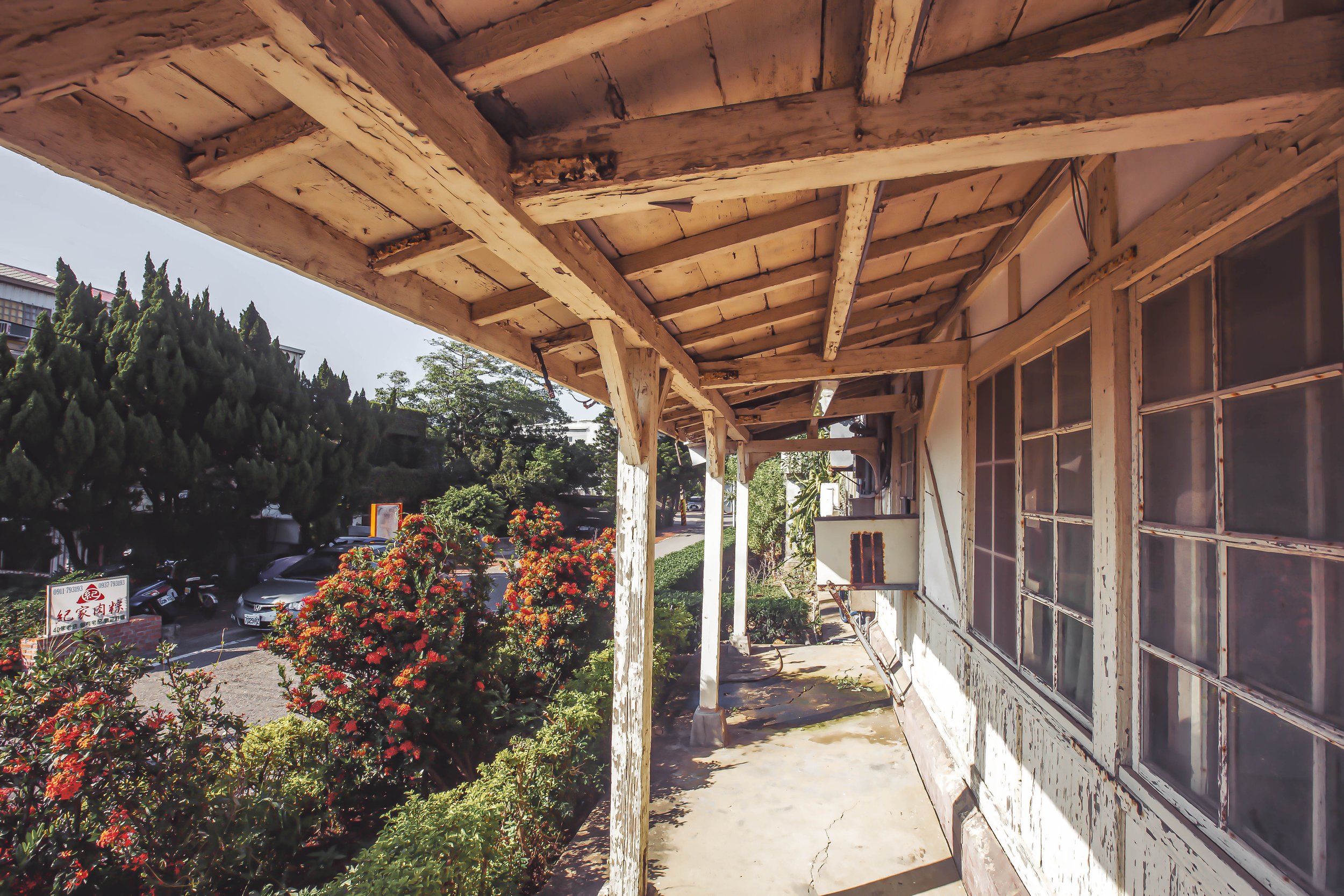Over the past few months I’ve spent quite a bit of time writing about the so-called “Miaoli Three Treasures” (苗栗三寶), a collection of one hundred year old Japanese-era train stations located along the western coast of Taiwan. The three stations are incredibly important for a few reasons - obviously as I just mentioned, they’re all a century old (as of 2022), they’re all located along a special branch of the Western Railway, they were all constructed at the same time, and finally because they were all constructed in the same architectural style, and appear almost exactly the same - save for a few modifications over the years.
The odd thing about these ‘three’ treasures, namely Dashan (大山車站), Tanwen (談文車站) and Xinpu (新埔車站), is that there are actually a couple more of them which are somewhat ironically excluded.
Purely for hilarious political reasons, I assure you.
You see, as I mentioned in one of my earlier articles about the stations, Miaoli is a special place, one that many jokingly refer to a ‘sovereign nation’ of its own. Miaoli-kuo (苗栗國), as it is commonly referred to has a certain a swagger about it, and even though it may only be a long-running social media joke, the county in central Taiwan does set itself apart from the rest of Taiwan in a number of ways.
So yeah, even though some railway aficionados refer to those stations as the “Miaoli Three Treasures”, if you’re from out of town and add the other two you get the “Coastal Railway Five Treasures” (海線五寶).
As far as most westerners are concerned, ‘five treasures’ likely sounds a lot better than ‘three’, but in Chinese cultures the term “Three Treasures” (三寶) is an especially auspicious and meaningful number than five, so linguistically it has more sway.
Note: “Three Treasures” (三寶) linguistically refers to “the Buddha”, “the Dharma”, and “the Sangha” (佛寶, 法寶, 僧寶) in Buddhism, also known as the “Three Jewels” or the “Three Roots” and is a term that has significant meaning throughout Asia. That being said, the term “三寶” (sān bǎo) has taken on a number of meanings ranging from a Hong Kong style of bento box featuring three kinds of meat (三寶飯) to an idiot driving on the road (馬路三寶), among others.
If you’re like myself and you don’t actually hail from Miaoli, you’ll probably just want to include the other two stations, located in Taichung, because they deserve the same amount of respect - and to tell the truth they’re in a lot better shape than the other three!
Given that this article is number four out of five with regard to these stations, I’m moving on to the two remaining ‘treasure’ stations along the coastal railway.
Today, I’ll be introducing Rinan Station (日南車站), the station that is closest geographically to the three in Miaoli, and one of the most well-loved and historically significant of the so-called five treasures.
Suffice to say, the neighborhood surrounding the station has developed and transformed considerably over the past century, but the amazing thing is that this historic station hall remains pretty much exactly the same as it did when it was first constructed, and it remarkably remains in great shape given its age.
Located only a station away from the much larger and more popular Daijia Station (大甲車站), home to the renowned Dajia Jenn Lann Temple (大甲鎮瀾宮), and the annual Dajia Mazu Pilgrimage (大甲媽祖遶境進香), Rinan Station is easily accessible and is an absolute pleasure to visit!
But, before I start to introduce the station, I think it’s important to take a few minutes to introduce the Coastal Railway, and why it was so significant.
Coastal Railway (海岸線 / かいがんせん)
The history of the railway in Taiwan dates back as far as 1891 (光緒17), when the Qing governor, attempted to construct a route stretching from Keelung (基隆) all the way to Hsinchu (新竹). Ultimately though, the construction of the railway came at too high of a cost, especially with war raging back home in China, so any plans to expand it further were put on hold.
A few short years later in 1895 (明治28), the Japanese took control of Taiwan, and brought with them a team of skilled engineers who were tasked with coming up with plans to have that already established railway evaluated and then to come up with suggestions to extend it all the way to the south of Taiwan and beyond.
The Jūkan Tetsudō Project (ゅうかんてつどう / 縱貫鐵道), otherwise known as the ‘Taiwan Trunk Railway Project’ sought to have the railroad pass through all of Taiwan’s already established settlements, including Kirin (基隆), Taihoku (臺北), Shinchiku (新竹), Taichu (臺中), Tainan (臺南) and Takao (高雄).
Completed in 1908 (明治41), the more than four-hundred kilometer railway connected the north to the south for the first time ever, and was all part of the Japanese Colonial Government’s master plan to ensure that Taiwan’s precious natural resources would be able to flow smoothy out of the ports in Northern, Central, and Southern Taiwan.
Once completed, the Railway Department of the Governor General of Taiwan (台灣總督府交通局鐵道部) set its sights on constructing branch lines across the country as well as expanding the railway network with a line on the eastern coast as well.
However, after almost a decade of service, unforeseen circumstances in central Taiwan necessitated changes in the way that the western railway was operated, with issues arising due to typhoon and earthquake damage. More specifically, the western trunk railway in Southern Miaoli passed through the mountains and required somewhat of a steep incline in sections before eventually crossing bridges across the Da’an (大安溪) and Da’jia Rivers (大甲溪), which started to create a lot of congestion, and periodic service outages when the railway and the bridges had to be repaired.
Link: Long-Teng Bridge (龍騰斷橋)
To solve this problem, the team of railway engineers suggested the construction of the Kaigan-sen (かいがんせん / 海岸線), or the Coastal Railway Branch line between Chikunangai (ちくなんがい / 竹南街) and Shoka (しょうかちょう / 彰化廳), or what we refer to today as Chunan and Changhua.
Link: Western Trunk Line | 縱貫線 (Wiki)
Construction on the ninety kilometer Coastal Line started in 1919, and amazingly was completed just a few short years later in 1922 (大正11), servicing eighteen stations, some of which (as I mentioned above) continue to remain in service today.
Those stations were: Zhunan (竹南), Tanwen (談文湖), Dashan (大山), Houlong (後龍), Longgang (公司寮), Baishatun (白沙墩), Xinpu (新埔), Tongxiao (吞霄), Yuanli (苑裡), Rinan (日南), Dajia (大甲), Taichung Port (甲南), Qingshui (清水), Shalu (沙轆), Longjing (龍井), Dadu (大肚), Zhuifen (追分) and Changhua (彰化).
(Note: English is current name / Chinese is the original Japanese-era station name)
Nichinan Station (日南驛 / にちなんえき)
When the Coastal Railway officially opened for service on October 11th, 1922, construction on Rinan Station as we know it today had yet to be completed.
Trains would have stopped in the area along the way, but it wasn’t actually until about half a month later that the station officially opened to the public.
After some delays, the station we know today as Rinan Station (日南車站) officially opened to the public on October 30th, 1922 (大正12年) as Nichinan Station (日南驛 / にちなんえき). However, unlike some of the other stations along the coastal line, which were used primarily for loading freight, Nichinan held a dual role in that it was constructed in a strategic location between Enri Station (苑裡驛 / えんりえき) and Taiko Station (大甲驛 / たいこうえき), located across the ‘Daian River’ (だいあんけい), what we refer to today as the Da’an River.
Essentially, it was an important way-point along the Coastal Railway that allowed for trains to standby, prior to crossing the single-rail Da’an River Bridge (大安溪橋 / だいあんけいはし), in addition to allowing local residents to easily cross the river into the much larger Taiko Village.
“Nichinan” (or Rinan), has historically been a bit of a confusing area in terms of its geographic administration. During the Qing Dynasty, it was known as Rinan Village (日南庄), one of the districts of Biâu-li̍k-sa-pó (苗栗三堡), with the name being derived by Han settlers as a Chinese transliteration of the name used by the local Taokas tribe (道卡斯族), one of Taiwan’s plains indigenous people.
Then, when the Japanese took control of Taiwan in 1895, it was initially absorbed into Byoritsucho (苗栗廳 / びょうりつちょう), which then became a district of Shinchiku Prefecture (新竹州). Finally in 1920 (大正10年) it became part of Taichū Prefecture’s (臺中廳 / たいちゅうちょう) Taiko District (大甲郡 / たいこうぐん).
In today’s terms what that means is that it was originally part of Miaoli, then absorbed into Greater Hsinchu, and finally it became a part of Taichung.
When the Japanese era came to an end and the Chinese Nationalists took control of Taiwan, the Taichung area was redistricted several times, but since the 1920s, Rinan has remained a part of Dajia (大甲), whether it was part of the ‘village’, ‘township’ or the current ‘district’. That being said, Rinan is geographically closer to Miaoli’s southern Yuanli Township (苑裡鎮), as it is located on the same side of the Da’an River, separated from the rest of Dajia.
Keeping Nichinan’s geography in mind, it’s important to note that the Yuanli area in south-western Miaoli is nicknamed “Miaoli’s Barn” (苗栗穀倉) or “Miaoli’s Granary” (苗栗米倉), referring to the nearly 3000 hectares of land used for the production of agricultural products. The flat plains in the area, and access to the river meet the conditions necessary for the production of rice.
Today when you visit, you may notice some Chinese characters engraved on the ground in the public square in front of the station which read “米倉驛站” (mǐ cāng yì zhàn) or “Rice Granary Train Station,” an obvious nod to the station’s history, and that of the local community.
It’s important to note that the rice cultivated in the area wasn’t just your run-of-the-mill type eaten by regulars like you and me, it was the “tribute” (貢米) variety that would have been sent directly to Japan for the direct consumption of the royal family and the aristocracy. Similar to the famed rice grown in Taitung’s Chishang Village (池上), “Emperors Rice” (天皇御用稻米), as it has become known, has since been democratized, and remains one of Taiwan’s most prized exports in the Japanese market.
When you take into consideration that the Kōnan Station (甲南驛/こうなんえき), known today as Taichung Port Station (台中港車站) was only two stops away from Nichinan, it would have been extremely efficient having the rice loaded and sent directly to port where it could be put on a boat, sent back to the Japanese mainland and in the emperors rice bowl in no time!
In conjunction with the Coastal Railway’s other agricultural fruit exports (pineapples, watermelons, etc.) the construction of the railway pretty much paid for itself within a few years as it contributed greatly to the colony’s annual exports. So, from 1922-1945, Nichinan Station remained a strategically important one for the export of rice, as well as a standby station for trains crossing the bridge.
When the Second World War came to an end and the Chinese Nationalists took control of Taiwan, things pretty much remained the same at the station (save for a name change) until the late 1970s and 1980s when the railway was widened into a dual-rail network. When that happened, the platform area of the station was expanded, and an underground walkway was added to ensure the safety of passengers boarding trains at the station.
In 2002, Rinan Station was recognized by the Taichung Cultural Affairs Bureau (台中文化部) as a Protected Historic Property (台中市市定古蹟) and efforts were made to clean the area up.
With the number of passengers at the station gradually decreasing over the years, the daily administration of the station has been relegated to Dajia Station (大甲車站), and the majority of passengers make use of the convenient card swiping system to board the train rather than purchasing tickets.
Currently the station is home to only a few employees who oversee daily administrative duties.
As the station nears its centennial, the annual average number of passengers has steadily decreased from a high of 240,000 in 2013 to 175,000 in 2020. These numbers account for a daily average of about 250 passengers per day putting it at 160/240 with regard to Taiwan’s busiest stations.
So even though it isn’t the busiest of the nations railway stations, it isn’t the quietest either.
Before I get into the architectural design of the station, I’ll provide a brief timeline of events over the station’s one hundred year history:
Timeline
10/11/1922 (大正12年) - The Coastal Railway officially opens for service.
10/30/1922 (大正12年) - Nichinan Station (日南驛) officially opens for service after a delay in construction.
1945 (民國34年) - The Japanese-era comes to an end and the station is renamed “Jihnan Station” (日南車站), the Mandarin pronunciation of the original name.
1974 (民國63年) - The railway is widened into a dual-track line between Yuanli and Rinan Station.
1989 (民國78年) - Coinciding with the construction of the new Da’an River Bridge (大安溪橋), the station undergoes some changes including a reorganization of the station yard, and the addition of an underpass from the station to the platforms.
3/15/1994 (民國83年) - The station is downgraded into a ‘Type A Simple Station’ (甲種簡易站) and daily operation is coordinated out of nearby Dajia Station (大甲車站).
11/26/2002 (民國91年) - The station is officially recognized as a Taichung Protected Historic Property (台中市市定古蹟).
06/30/2015 (民國104年) - The station switches from primarily issuing tickets to card swiping.
09/16/2017 (民國106年) - The station is again reclassified as a “Simple Station” (簡易站).
10/30/2022 (民國11年) - The station will officially celebrate its centennial.
Architectural Design
When we talk about the stations that make up the “Coastal Railway’s Five Treasures” (海線五寶), the architectural design of each of the five stations differ only slightly - and most of those differences are the result of the past few decades of operation. This shouldn’t be too much of a surprise given that they were all small stations, each of which opened in the same year which means that some funds were saved when it came to architectural design. The design of these buildings is about as formulaic as you’ll get with Japanese architectural design, but don’t let that fool you, the simplicity of these stations still allows for some special design elements.
The station was constructed in a fusion of Japanese and Western architectural design, and one of the reasons why it stands out today (apart from its age) is that it was built entirely of wood (木造結構), more specifically locally sourced Taiwanese cedar (杉木).
The architectural design fusion in many of the buildings in Taiwan that were constructed during the Taisho era (大正) borrowed elements of Western Baroque (巴洛克建築) with that of traditional Japanese design. In this case of these stations, the western aspects of its design are subdued (likely for cost saving measures), allowing the traditional Japanese design elements stand out more.
To start, the station was constructed using the Irimoya-zukuri (入母屋造 / いりもやづくり) style of design, most often referred to in English as the “East Asian hip-and-gable.” The building was constructed with a network of beams and trusses within the interior as well as the exterior of the building that allow the roof to (in this case slightly) eclipse the base (母屋) in size and ensured that its weight is evenly distributed.
The roof itself was designed using the kirizuma-zukuri (妻造的樣式) style, which is one of the oldest and most commonly used designs in Japan. Translated simply as a “cut-out gable” roof, the kirizuma-style is one of the most basic of Japan’s ‘hip-and-gable’ roofs and basically refers to a section of the roof (above the rear entrance) that ‘cuts’ out from the rest and faces outward like an open book (入) while the longer part of the roof is curved facing in the opposite direction.
If you’re standing in front of the building, the roof will appear rather simple, but if you’re looking at the building from the rear you’ll see an almost 3D like shape where one section of the roof cuts into the other and forms a single roof. In conjunction with a lower covered portico that surrounds the building on three sides, you’ll discover more geometrically advanced shapes that make the design of the building stand out.
You’ll notice that the space between the highest part of the roof and the lower portico features several glass windows meant to allow natural light to enter the building. Unfortunately, at some point someone had the idea to place square lighted signs with the name of the station, somewhat blocking the windows. Fortunately the windows are located on three sides of the station hall, so during the day you’ll find that there is an ample amount of natural light coming into the building.
The interior of the station hall is split in two sections, much like the example we saw the former Qidu Railway Station, with the largest section acting as the station hall while the other was where the station staff and ticket windows were located. Given that this station remains in operation, only one side is currently open to the public. Unfortunately, within the side that is open there isn’t a whole lot to see as they have covered up the walls with a bunch of notices.
While inside however, you’ll want to take note of the old cement floor and the large sliding glass windows to the left of the ticket window and to the right of the entrance. Likewise, I recommend looking up at the wall opposite the ticket booth where you’ll see the ox-tail window, and the usage of wooden beams used to ensure stability.
If you look closely at the photo below, while I was taking photos of the ox-tail window from the inside, I noticed that there was a family of geckos hanging out around the window catching any insect that flew by. Obviously this isn’t something that you’ll see happening at many train stations in Taiwan today, so I think it added to the charms of this small country-side station.
One of the most notable aspects of the interior is the wooden gate located near the ticket booth. Gate’s like this were once very common in train stations during the Japanese-era but few of them remain in the country these days. Constructed to look like the Japanese word for ‘money’ (円), the gate is set into the concrete near the ticket booth as a means to help filter people in an out while waiting in line.
Likewise, once you’ve passed through the building to the other side you’ll find a beautiful wooden fence that is also quite rare in Taiwan these days.
From the rear (and on the eastern side of the building), one of the most notable Baroque inspired elements is the round ox-eye window (牛眼窗) located above the cut section of the roof near the arch. These windows help to provide natural light into the office section of the building and is one of those western architectural elements that Japanese architects of the period absolutely loved to include in their buildings.
One thing you’ll notice about station in relation to the others is that at some point it was painted, so the exterior appears a bit darker than the others. Coincidentally the other Taichung-area station, Zhuifen Station (追分車站) was painted the same color, making both of the ‘treasures’ in Taichung look as if they’re in better shape than the three in Miaoli. I’m guessing this is probably because Taichung is a considerably better off area than its northern neighbor, so some funds were appropriated to allow for some repair work on the buildings.
That being said, to the right of the station you’ll find a couple of (yet-to-be-restored) dormitories that used to house the staff working at the station. Both of the dorms are in pretty rough shape, but it looks like the Taichung City Government has slated them for restoration, which is pretty cool. In the future its possible that they’ll open up to the public as railway-related cultural buildings.
Getting There
Address: #8, Alley 140, Sec 2 Zhongshan Road. Dajia District, Taichung. (臺中市大甲區中山路二段140巷8號)
GPS: 24.378320, 120.653780
As is the case with any of my articles about Taiwan’s historic railway stations, I’m going to say something that shouldn’t really surprise you - When you ask what is the best way to get to the train station, the answer should be pretty obvious: Take the train!
Given that Rinan Station the first station you’ll reach as you pass from Miaoli into Taichung, you might be thinking that the best way to get to the station is to first travel to Taichung and then transferring from there.
Unfortunately, when you arrive in Taichung, you’ll discover that you’ll have to take one of the local commuter trains (區間車) south through the loop that connects to the Coastal Railway and the back up north to the station. The entire ride takes a little over an hour, which is pretty much the same amount of time it takes to arrive at the station directly from Hsinchu Station. If you’re traveling from the north and want to check out the station, I highly recommend you take the coastal route all the way from Hsinchu into Taichung and from there looping back along the mountain line.
If you’re already in Taichung, you’ll simply have to hop on a local commuter train bound for Miaoli along the coastal line.
If you’re in the area and you have access to your own means of transportation, getting to the station is simple, but the neighborhood where it is located doesn’t offer many parking spots for cars along the narrow roads, so you may find yourself searching for a spot for a while.
To get there simply input the address or the GPS coordinates provided above and you shouldn’t have any problem.
When you arrive, you should be free to walk around and check it out, but if the volunteer who works there is in a bad mood (not likely) you may have to purchase a ‘platform ticket’ (月票 or 月台票), which will allow you to enter the station and walk through the turnstile without getting on the train. It’s the kind of thing people used to purchase when they were seeing off their friends or family, and should only cost about 10NT. You could also just swipe your EasyCard to go in and out, but that’ll cost more (the base price for swiping the card is higher) if you aren’t traveling on the train.
With five of these Japanese-era stations still in working order along the Western Coastal Railway, it’s possible that a much more ambitious person than myself could attempt to day-trip a visit to all of them. Unfortunately given how much time I spent at each of these stations taking photos, that would have been impossible, and I would have missed out on some of their hidden charms.
In retrospect, if I were to do it all again, I’d first visit the ‘Miaoli Three Treasures’ (苗栗三寶) on one excursion and then take another day to visit Rinan Station, Taichung Station (臺中車站) and Zhuifen Station (追分車站) in addition to the former Tai’an Station (泰安車站) on my way back.
That being said, there is a ton of stuff to see and do while in Taichung, so why not just stick around for a day or two and enjoy the city?
Given that I’m publishing this article in 2022, Rinan Station and the other so-called ‘treasures’ along the coastal line will be celebrating their centennial, so if you’re in the area why not stop by and appreciate these historic buildings? You won’t regret it!
References
Rinan Station | 日南車站 | 日南駅 (Wiki)
日南車站 (臺灣驛站之遊)
海線五寶 (Wiki)
日南車站‧找尋遺留在季風中的回憶 (旅遊圖中)
縱貫鐵路海線.日南車站 (臺中市文化資產處)
縱貫鐵路(海線)─日南車站 (國家市文化資產處)
日南駅 (れとろ駅舎)
鐵道迷最愛美拍!台灣「海線5寶」你去過幾個? (食尚玩家)
細說苗栗「海線三寶」車站物語 (臺灣故事)
木造車站-海線五寶 (張誌恩 / 許正諱)
海線僅存五座木造車站:談文、大山、新埔、日南、追分全收錄!(David Win)
臺中市文化資產 (Wiki)







































